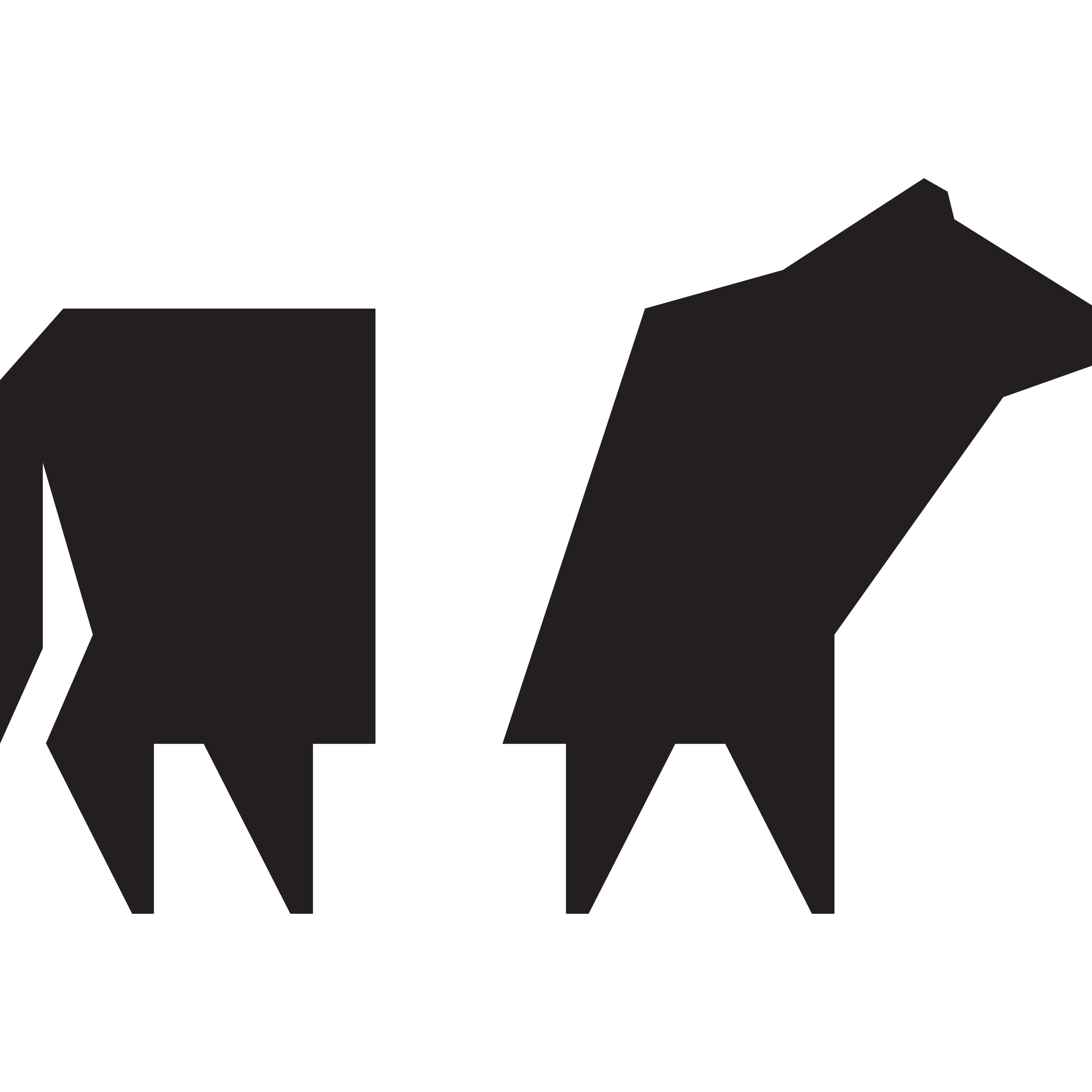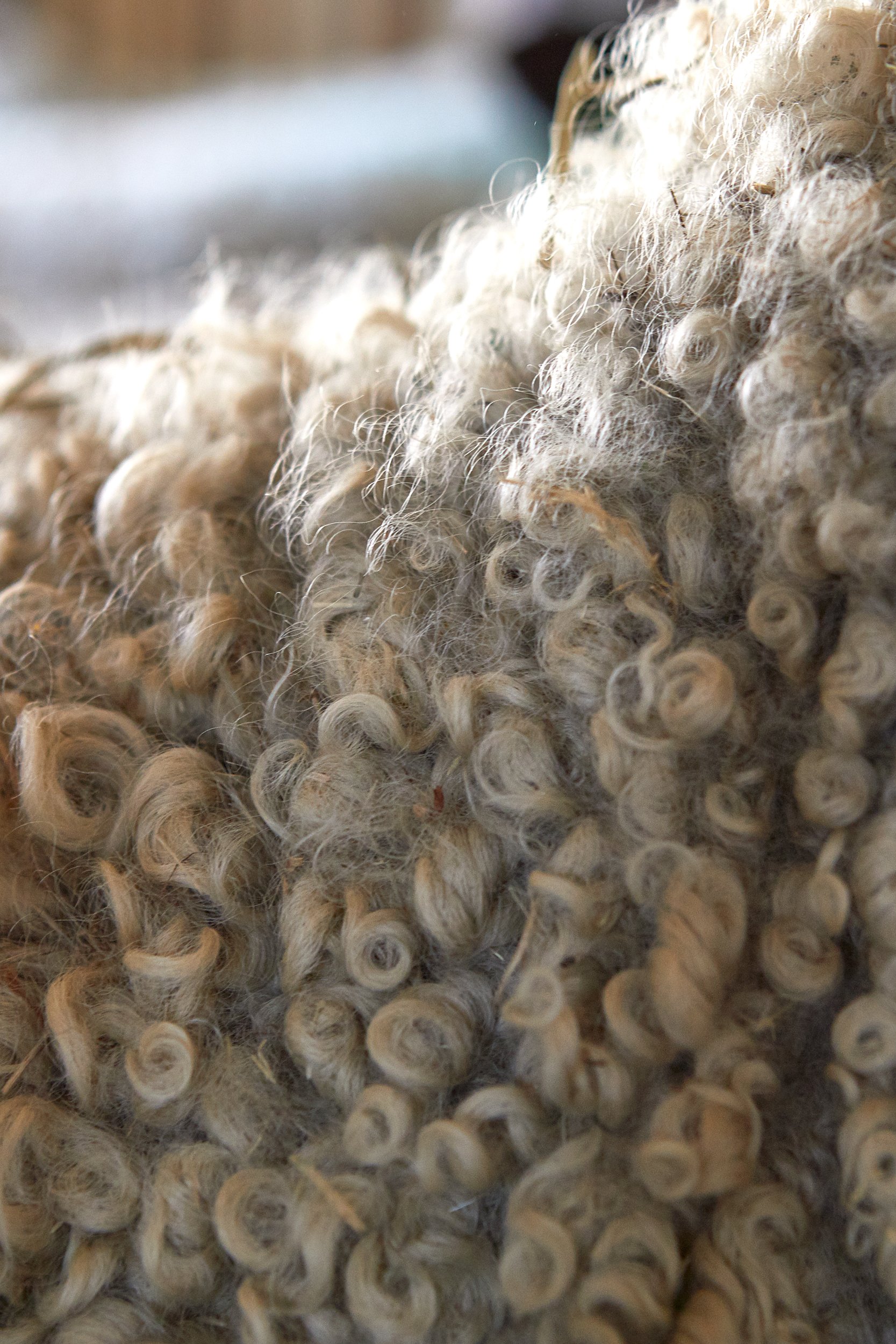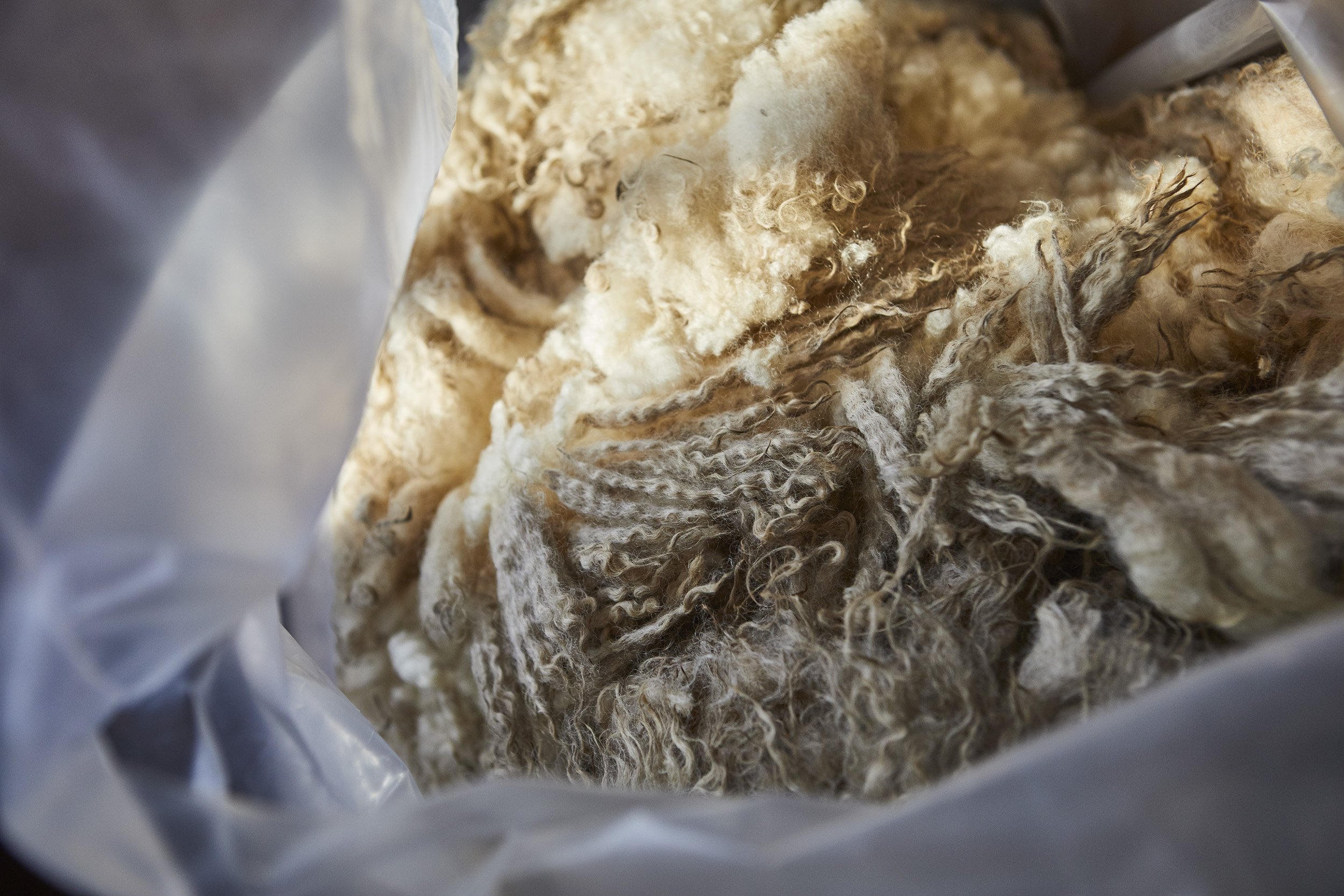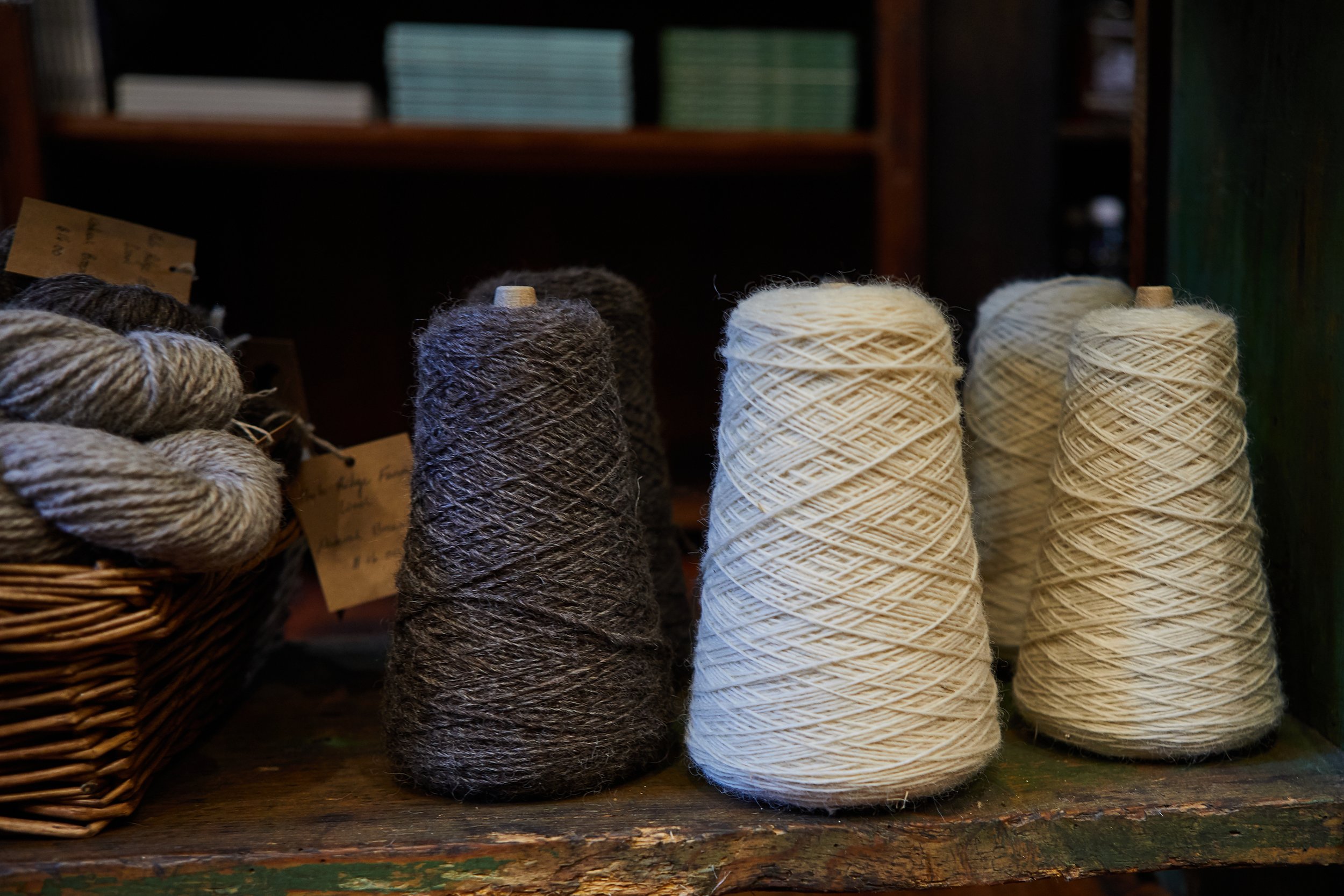The Life of Wool
By Evan Rieth
Form follows function, and in the case of our wool, beauty follows function. In much the same way we cherish the opportunity to practice nose-to-tail butchery, we also delight in the chance to fully utilize the pelts and hides of the animals we harvest.
We raise Romney, Border Leicester, and Cheviot sheep at Philo Ridge Farm. These breeds were developed to produce fine-fibered wool on a well-muscled frame, and we use them in much the same way today. Animals such as these are known as dual-purpose breeds, and we delight in each of their purposes.
While our lamb crop is still out grazing the lush fall flush of our pastures just a few weeks ago, the ewe flock was sheared. Here begins the transformation of wool from an animal’s coat into a spun fiber.
We are lucky to have a marvel of a shearer, Gwen Hinman, to clip our sheep. To watch a shearer at work is to watch a person deeply familiar with how their body interacts with a sheep’s body. It is a site to behold. This is less about strength and more about technique: a careful weave of human limbs and sheep limbs that renders the sheep immobile.
The process goes like this: Gwen lays the ewe on its butt. She begins by shaving the ewe’s sparse, fine belly wool and moves to the flanks. As she shears, the fleece cascades in thick ribbons off the sheep. With the fleece shorn, Gwen gives the ewe a quick hoof trim, and off the sheep bounces as if nothing has happened. We then gather up the fleece, pull off any bits of dirty or burr-tangled wool (a process known as skirting), and bag it up.
The wool is then sorted by color (black, grey, and white) and delivered to Green Mountain Spinnery, where it is spun into skein after skein of naturally-hued yarn.
We cherish this product for its versatility. It is an excellent material to use when you embark on your next knitting project when sold as skeins. When we send our wool out to Peggy Hart (a weaving partner of ours based in Massachusetts), it returns as a blanket, warped and wefted into a thing both beautiful and useful.
One of our partners in wool production is Swan’s Island Company. Since 1992, Swan's Island has produced beautiful textiles and yarn and carries that legacy of craftsmanship on the Maine coast. Using Philo Ridge Farm wool, they have woven a limited line of apparel, bags and home goods sold in our Market.
“Knitting has a profound connective power. The culture and people and rituals around it, the values, they all contribute to an immediate and profound trust in one another.”
The sheep on our farm destined for meat harvest– any lambs or ewes not being bred this year– are not shorn. Instead, they retain the summer growth of their wool, for their thickly fleeced hides will become the pelts sold in our market. On the day our lambs are slaughtered, we pick up the hides from the slaughterhouse and trim off the remaining fat, meat, and undesirable flaps of skin. Then we salt the hides to halt decomposition and begin the curing process. When we send them off to the tannery, they are salt-dried and crusty, ready to be stretched, scraped, and softened. When the pelts are returned, the leather is smooth and the fleece is cleaned and conditioned.
While few of us have the opportunity to be deeply familiar with a sheep in the same way that a shearer or farmer does, we do have the chance to be deeply familiar with their pelts and yarn. Sink your hands into the tight curls of one of our pelts; run your fingers over the finely-spun skeins of yarn. In a shirt, a sweater, a blanket or a pelt, wool offers the opportunity to feel a small part of an animal’s life.






